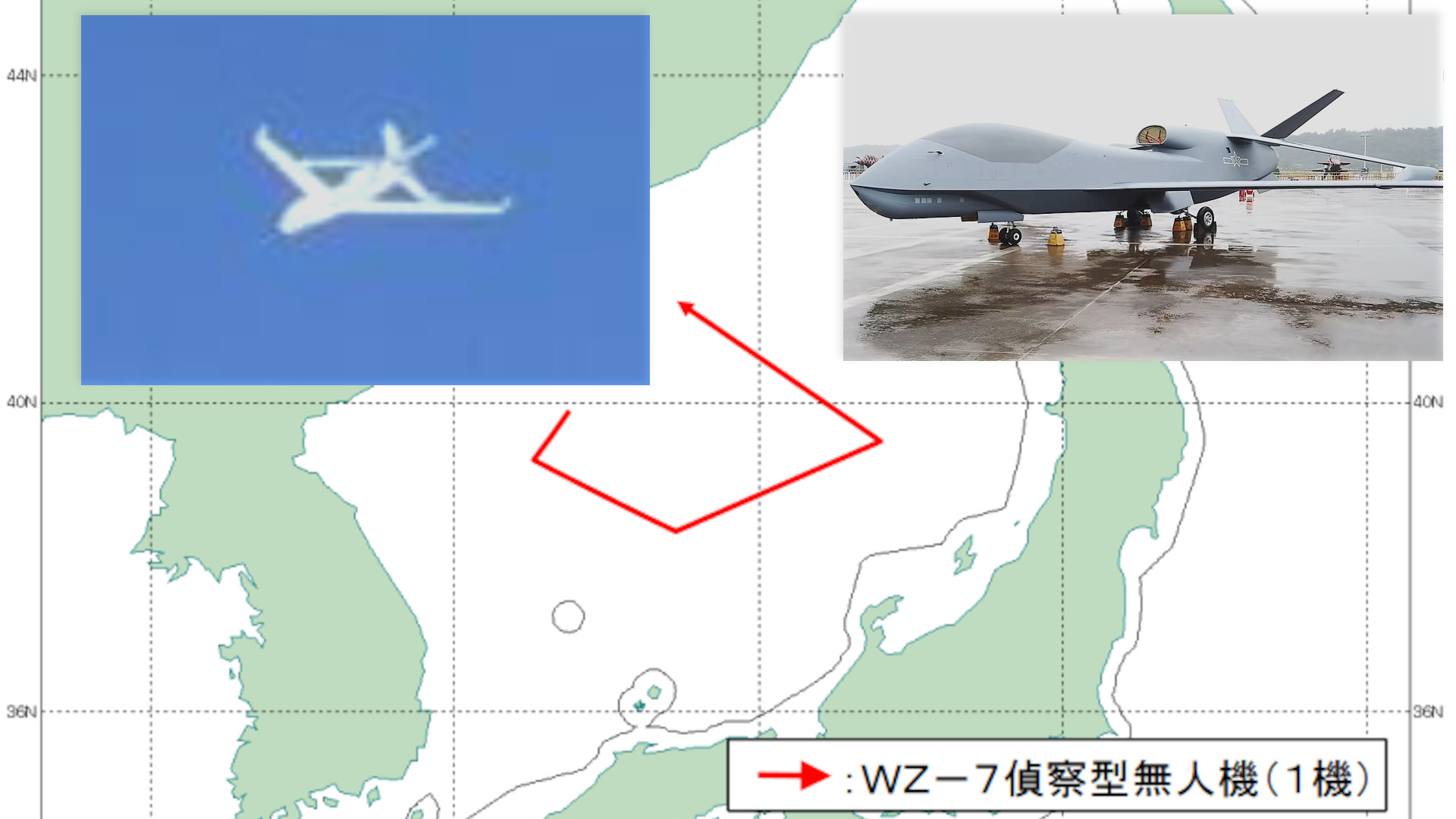One of the Chinese People’s Liberation Army’s high-flying WZ-7 Soaring Dragon reconnaissance drones flew a mission over the Sea of Japan today. This appears to be the first time the type, instantly recognizable thanks to its unique joined-wing design, has operated in this area. In addition, information about its route indicates it crossed over Russia or North Korea to get there and back.
The Japanese Ministry of Defense (MoD) issued a brief press release about the WZ-7’s flight earlier today. Unspecified fighters from the Japan Air Self-Defense Force’s Central Air Defence Force, likely F-15J Eagles based on the known units assigned to that command, were scrambled in response.
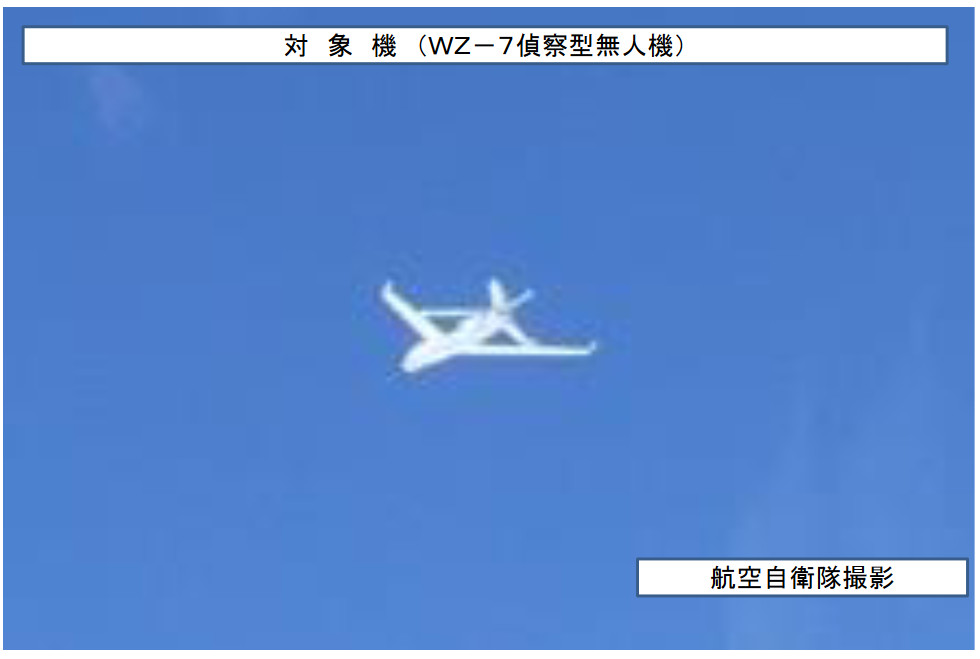
The WZ-7 “came from the continent [of Asia], circled over the Sea of Japan, and then headed northwest toward the continent,” according to a machine translation of the Japanese-language release. This aligns with the map, seen below, that Japanese authorities included in their release showing the drone’s flight path. We will come back to this later.
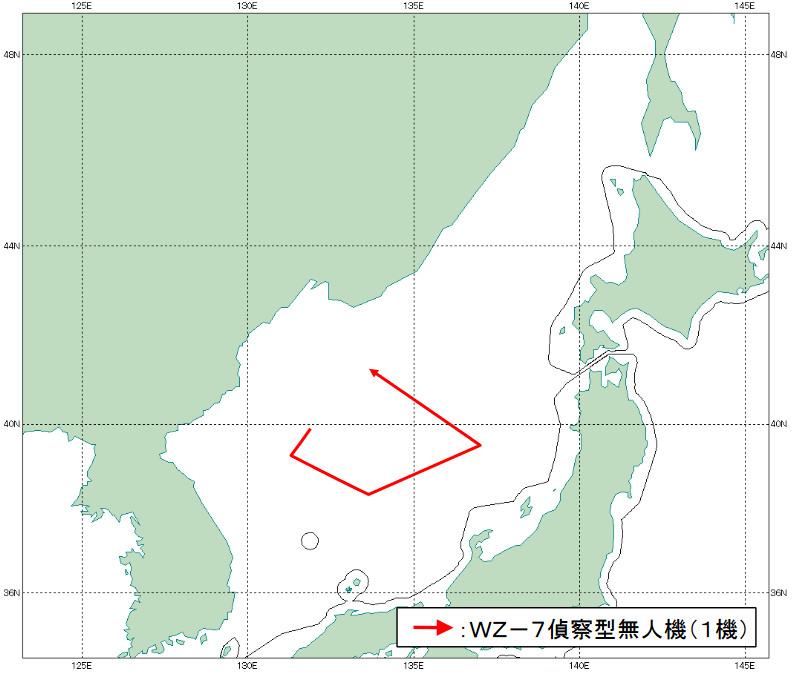
This is not the first time WZ-7s, which have been in service since at least the late 2010s, as well as other drones, have been spotted flying off the coasts of Japan. Separately, Soaring Dragons have also been active over and around the Taiwan Strait and over land along the Chinese border with India.
However, today’s flight does look to be the first time Japanese authorities have caught a WZ-7 over the Sea of Japan, a strategic body of water that lies between the country’s home islands and mainland East Asia.
Details about the jet-powered WZ-7, which the People’s Liberation Army Air Force (PLAAF) and People’s Liberation Army Navy (PLAN) both operate, are limited. Publicly available estimates say its range is around 4,350 miles and its service ceiling is upwards of 60,000 feet. Its endurance could be at least 10 hours, but how long it may actually be able to stay aloft could be significantly longer. As The War Zone has noted in the past, the drone’s specifications may come up short of a true high-altitude, long-endurance (HALE) drone design like the U.S. RQ-4 Global Hawk, examples of which are now also in Japanese service. This would reflect the WZ-7’s more regional focus, which fits with China’s overall military focus, while the larger Divine Eagle could fill the higher-end segment of the HALE category.

The WZ-7 is also understood to be primarily intended for intelligence, surveillance, and reconnaissance (ISR) missions. However, the exact configuration of the drone’s sensor suite, which could be modular/interchangeable to some degree, is unknown.
Close-up views of a WZ-7 on display at the 2022 Zhuhai Airshow clearly show a gondola-like fairing under the forward fuselage that could be big enough to hold multiple types of sensor systems, including radars and various kinds of imaging systems. There is also a dome underneath the rear of the fuselage that looks to be a line-of-sight datalink antenna. A picture of another Soaring Dragon in 2021 indicated that it was assigned to a unit previously only known to fly specialized crewed electronic warfare aircraft. This might point to a configuration with an electronic intelligence/signals intelligence capability, as well as an electronic warfare one.
What specific activity in the Sea of Japan might have prompted the WZ-7’s flight today is unknown. Japanese authorities issued a separate press release today about monitoring a Russian Vishnya class spy ship as it sailed in international waters in the Sea of Japan along the western coast of the home island of Honshu. The Japan Self-Defense Forces also tracked three PLAN warships – a Type 052D destroyer, a Type 054A frigate, and a Type 903 replenishment ship – entering the Sea of Japan last week.
It is unknown whether or not the presence of any of these ships is connected to the subsequent WZ-7 sortie. The long line of sight the drone offers from its high altitude perch could have been useful for supporting the movement of the PLAN ships near the Japanese coast.
More importantly, the Soaring Dragon’s flight path points to a direct link to either Russia or North Korea. China does not have any coastline along the Sea of Japan. For the WZ-7 to have flown southeast from the continent and then to have returned in roughly the reverse direction, as Japanese authorities said it did, it would have had to have passed over Russia or North Korea going both ways.
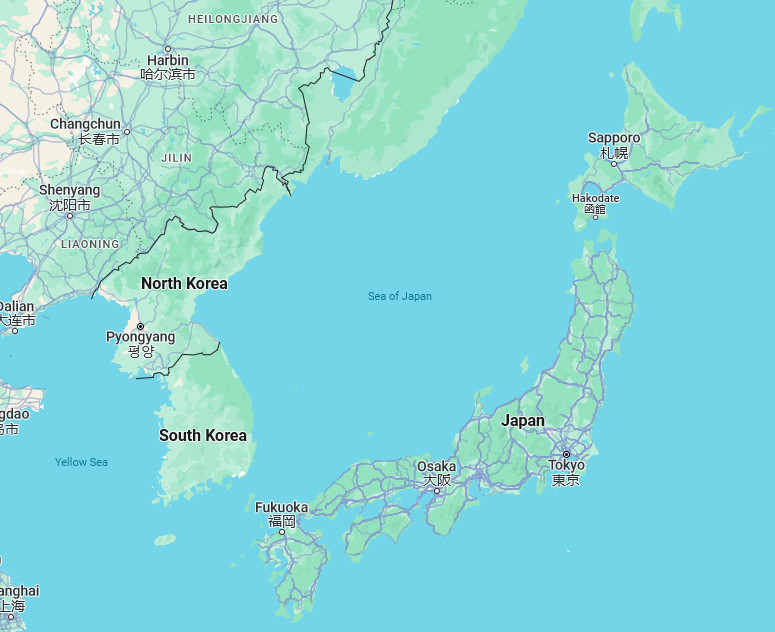
A flight over North Korea is a definite possibility. The Chinese government remains the main ally of the regime in Pyongyang. Both countries see Japan, as well as its principal ally the United States (which has an extensive military presence in Japan), as top competitors and potential adversaries.
At the same time, the Chinese WZ-7 making use of Russian air space might be more likely. Ties between Beijing and Moscow have strengthed significantly in recent years as the Kremlin has become more globally isolated since it launched its all-out invasion of Ukraine in 2022. This now very close relationship has seen China send Russia significant amounts of munitions and other materiel to support its war effort, as well as a notable increase in joint Russian-Chinese military activities.
A prime example of this stepped-up military cooperation came in November 2022, when Russian Tu-95MS Bear and Chinese H-6K bombers conducted joint patrols, including over the Sea of Japan, and then flew to bases in the opposite country. Though Russian-Chinese joint bomber patrols had occurred before then (and since), this was the first instance to involve reciprocal landings afterward, and is another example of Chinese aircraft utilizing Russian airspace.
At this time we just don’t know for sure how the WZ-7 got to and from the Sea of Japan today. Regardless, Chinese drones making use of friendly airspace to get to and from an off-shore operating area is a very interesting development.
Making use of foreign airspace in its long-range drone and other air operations would give the PLA additional avenues to reach areas of interest, including ones like the Sea of Japan that would only be otherwise accessible via circuitous routes from the Chinese mainland. Shorter transit routes also mean more time on station once drones, as well as crewed aircraft, get to their designated operating areas.
For instance, the rough distance from the WZ-7’s main operating hub at Shuangliao Air Base in northeastern China to the middle of the Sea of Japan and back via international airspace is 2,700 miles. Flying a straight shot through North Korea and back instead cuts this distance roughly in half. The length of the route could be shortened even further by staging from other bases that are closer.
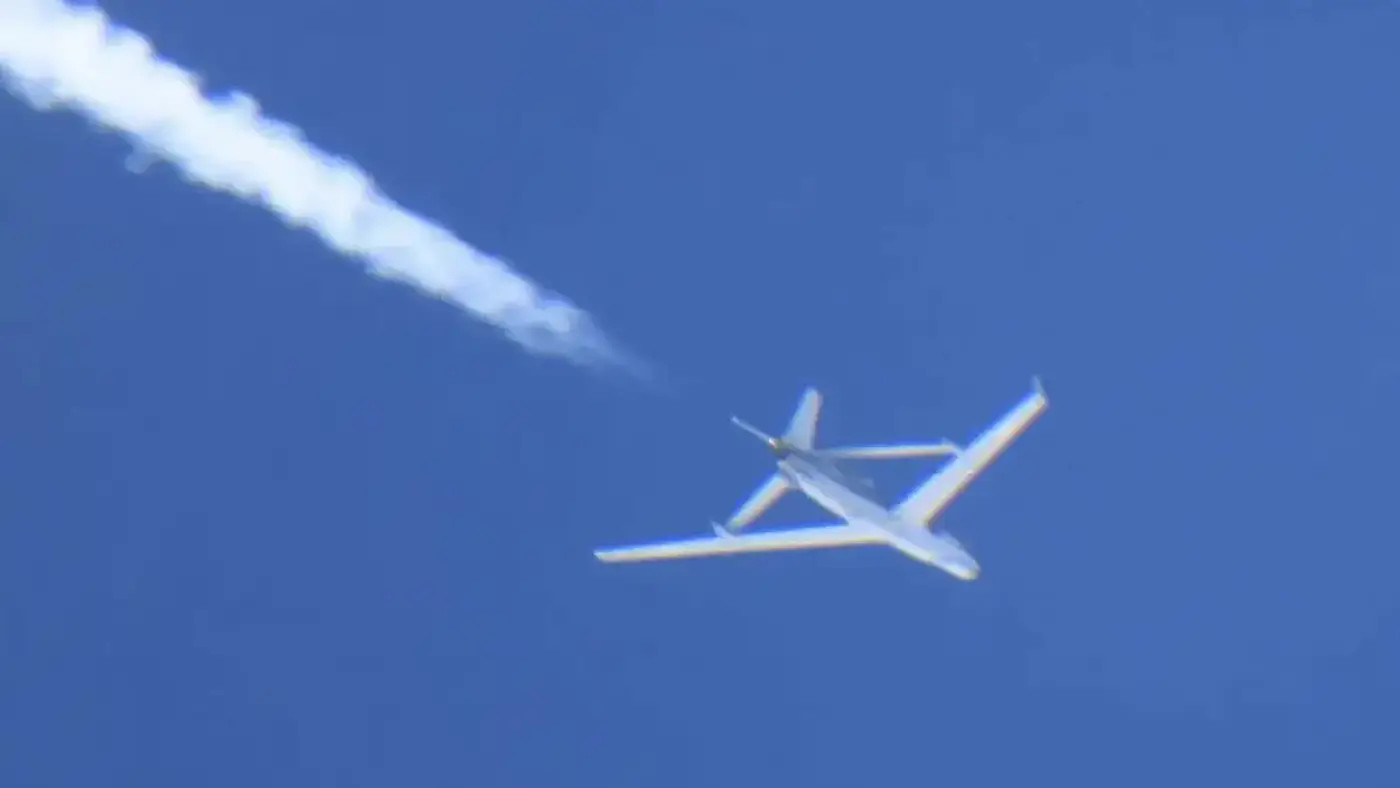
The increasingly strategic Arctic region, where the Chinese government has stated ambitions of becoming a more significant actor, is another part of the world where this kind of access could be very valuable. In another example of growing military cooperation between Beijing and Moscow, a flotilla of 11 Chinese and Russian warships conducted a major show of force off the coast of Alaska last August.
“Fortunately, we haven’t seen Chinese aircraft operate near our … Air Defense Identification Zones yet, but I think that that’s coming as early as this year,” U.S. Air Force Gen. Gregory Guillot, head of U.S. Northern Command (NORTHCOM) and the U.S.-Canadian North American Defense Command (NORAD), told members of the House Armed Services Committee at a hearing earlier this month. “That shows an overall concern I have about the growing capability of China not only with the aircraft, but also with ships and even submarines being able to range further from China and closer to our shores.”
With all this in mind, it will be very interesting to see whether or not Chinese drone flights over the Sea of Japan, conducted via either Russian or North Korean airspace, become more routine. Whether or not the PLA begins conducting other air operations making use of foreign air corridors remains to be seen, too.
Whatever the case, today’s WZ-7 flight looks to be an important development beyond just being the first apparent sighting of one of these drones over the Sea of Japan.
Contact the author: joe@twz.com
